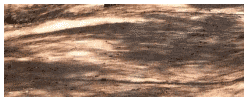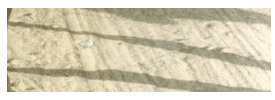Shadows
 This piece begins with the philosophical concept that everything
has a metaphorical ´shadow´: creation seems to require
struggle, peace is perceived by the presence of conflict, harmony
is released from discord, thus a balance (as in the 2nd
movement) is reached by the presence of opposites. Conversely,
while shadows prove an absence of light, for it is the
shadows´ object that blocks the light thus creating the shadow
in the first place, shadows also prove existence. So the
shadow in this context is one of affirmation. A rain forest
that cast no shadows has ceased to be. Shadows of endangered
species will no longer grace the earth. Shadows then
can be seen as both positive and negative.
This piece starts with man´s conflict with man, a lone monument
(WWII monument in London), depicted by a solo trumpet,
casts a shadow. Echoes of man´s discomfort with himself
arise as does the idea of conflict being the shadow of peace.
The second movement, balance, shows a theoretical equilibrium
as two disparate musical harmonies are sounded thus
creating a third. This continues throughout the movement
using rhythmic pulses which themselves begin to play
against each other, creating new rhythms.
The 3rd and 4th movements, Shadow dance, and moonlight
and neon, are a more literal musical representation of shadows:
the dance of shadows on a summer´s day and the
sometimes eerie distortions of shadows at night. In Shadow
dance, half the ensemble is muted throughout, acting as
This piece begins with the philosophical concept that everything
has a metaphorical ´shadow´: creation seems to require
struggle, peace is perceived by the presence of conflict, harmony
is released from discord, thus a balance (as in the 2nd
movement) is reached by the presence of opposites. Conversely,
while shadows prove an absence of light, for it is the
shadows´ object that blocks the light thus creating the shadow
in the first place, shadows also prove existence. So the
shadow in this context is one of affirmation. A rain forest
that cast no shadows has ceased to be. Shadows of endangered
species will no longer grace the earth. Shadows then
can be seen as both positive and negative.
This piece starts with man´s conflict with man, a lone monument
(WWII monument in London), depicted by a solo trumpet,
casts a shadow. Echoes of man´s discomfort with himself
arise as does the idea of conflict being the shadow of peace.
The second movement, balance, shows a theoretical equilibrium
as two disparate musical harmonies are sounded thus
creating a third. This continues throughout the movement
using rhythmic pulses which themselves begin to play
against each other, creating new rhythms.
The 3rd and 4th movements, Shadow dance, and moonlight
and neon, are a more literal musical representation of shadows:
the dance of shadows on a summer´s day and the
sometimes eerie distortions of shadows at night. In Shadow
dance, half the ensemble is muted throughout, acting as


